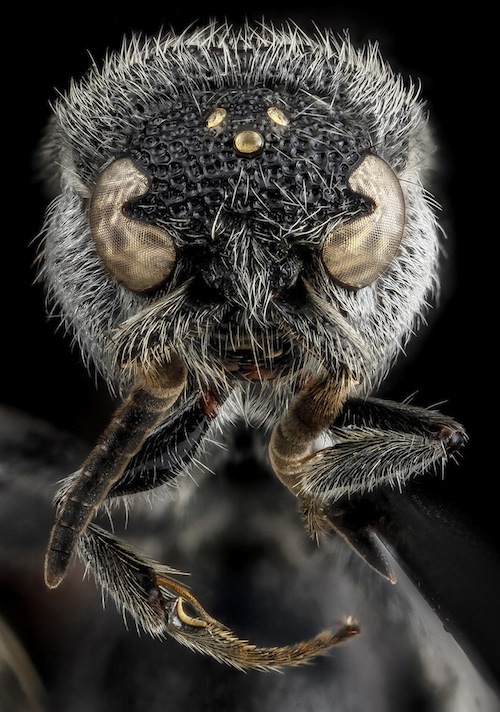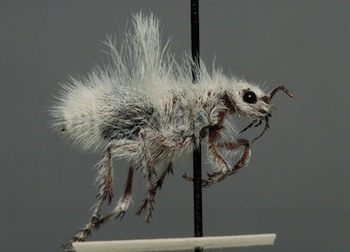 It’s small, it’s fuzzy, and it hurts like hell. Variously known as the “cow killer,” “mule killer,” and “motherf-ing thing that just stung me,” the velvet ant packs more pain per pound than the meanest great white.
It’s small, it’s fuzzy, and it hurts like hell. Variously known as the “cow killer,” “mule killer,” and “motherf-ing thing that just stung me,” the velvet ant packs more pain per pound than the meanest great white.
Don Manley, a professor emeritus of entomology at Clemson University, recalls his run-in with Dasymutilla sp. as the worst sting of his career:
I had heard from others who had been stung by a velvet ant that ‘it hurt so bad for about twenty to thirty minutes that I just wanted to die and get it over with’ … I had worked with [velvet ants] for over twenty years before I was finally stung. I concur with the description. I have not been stung by a velvet ant since—I will not be stung by a velvet ant again.
The sting was glancing, but the resulting knot on Manley’s thumb lasted for almost a month.
Velvet ants, which are not ants at all but solitary, wingless wasps, are distinguished by their thick, showy coats of red, orange, or  cream-colored hairs: The thistledown velvet ant, found in the U.S. Southwest and northern Mexico, has a fabulous coat of long white hairs worthy of Siegfried and Roy. Velvet ants have unusually hard exoskeletons that even rats find difficult to crush, and while mating both sexes produce a high-pitched squeak. (If that’s not terrifying, I don’t know what is.) The males are seldom seen, and while they can perform an elaborate imitation of stinging behavior, it’s an empty threat. Only the females, which spend a lot of time in the open looking for burrows to parasitize, can really sting—and boy, do they ever.
cream-colored hairs: The thistledown velvet ant, found in the U.S. Southwest and northern Mexico, has a fabulous coat of long white hairs worthy of Siegfried and Roy. Velvet ants have unusually hard exoskeletons that even rats find difficult to crush, and while mating both sexes produce a high-pitched squeak. (If that’s not terrifying, I don’t know what is.) The males are seldom seen, and while they can perform an elaborate imitation of stinging behavior, it’s an empty threat. Only the females, which spend a lot of time in the open looking for burrows to parasitize, can really sting—and boy, do they ever.
Justin Schmidt, an entomologist famous for developing a “pain index” of insect stings based on his unenviable personal experience, reports that while Dasymutilla venom is essentially harmless—it contains few active enzymes—the sting is painful enough to drive off most predatory lizards, birds, and rodents. He writes:
In the most definitive example of sting pain effectiveness, four gerbils attacked the [velvet ants], were stung, and retreated while vigorously scratching their stung mouths. Two of the four gerbils never attacked again, two of them attacked a second time, and one of these successfully ate the insect. It might be noted that the successful attacker had not eaten in forty-eight hours and persevered despite the stings.
Draw your own conclusions about gerbils, folks.
Still not scared of the dread Dasymutilla? Consider this: while there are 470 species of sharks, many quite mild-mannered, there are 10,000 species of Dasymutilla worldwide, and every one of them has a remarkably memorable sting. So don’t go in the water—and if you value your thumbs, don’t go in your backyard, either.
Top image: Male velvet ant, courtesy of Flickr user Sam Droege.
Bottom image: Thistledown velvet ant, Dasymutilla gloriosa. Wikimedia Commons.
I think the important message here is that gerbils are the hardest motherf$&%ers in the animal kingdom. Who knew?
i know, right!? Gerbils!